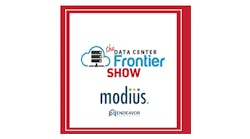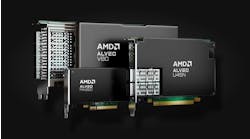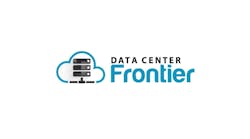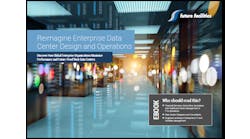Nickel-Zinc: The Data Center Shift Beyond Lithium-Ion and Lead-Acid
Modern data centers are the backbone of digital operations, supporting AI, cloud computing, e-commerce, and more. As power consumption surges - especially due to AI’s high computational requirements - the need for reliable, efficient, and eco-friendly backup power is greater than ever. While lead-acid and lithium-ion batteries have long been widely used, nickel-zinc (NiZn) technology is emerging as a powerful alternative that is inherently more safe, reliable, and sustainable.
The Limits of Traditional Battery Technologies
Lead-acid batteries have historically been the standard for uninterruptible power supply (UPS) systems, valued for their affordability and reliability. However, in today’s high-demand environments, their large size, short lifespan, and relatively low energy density have made lead-acid batteries a less efficient choice.
Lithium-ion batteries improved on some of these limitations with their compact design and longer lifespan. However, this chemistry presents well-documented risks, including thermal runaway and toxic gas emissions – factors that can carry serious operational and financial implications. Environmental and ethical concerns around lithium mining further complicate its role as a long-term fit for sustainable data center operations.
The Nickel-Zinc Advantage: Safer Power. Smarter Design. Sustainable Future.
Nickel-zinc batteries deliver a superior alternative to traditional chemistries – overcoming historical UPS limitations without compromise. Here’s why NiZn is quickly becoming a preferred choice for UPS systems:
1. Maximum Power, Minimal Footprint
NiZn immediate power technology delivers up to three times the power density of conventional battery solutions, while occupying just half the footprint and one-third of the weight. As data center operations continue to demand more power in existing or smaller spaces, high power density translates to direct savings. By packing more power into a smaller, industry-leading footprint, nickel-zinc solutions optimize floor space for critical, revenue generating equipment.
2. Exceptional Safety and Dependability
NiZn chemistry is fundamentally safe and does not pose a risk of thermal runaway at the cell level. It also operates effectively across a wider temperature range than both lead and lithium, reducing the need for extensive cooling infrastructure.
Nickel-zinc batteries deliver consistently high dependability without compromising safety. Unlike lithium-based chemistries that may require system shutdowns through battery management systems (BMS) to prevent thermal runaway, NiZn systems remain operational—even if a single cell becomes weak or depleted—ensuring continued performance with minimal downtime.
Thanks to its inherently safe chemistry, NiZn does not require trading off reliability for safety. Even during unexpected cooling system failures, NiZn batteries continue to operate safely and reliably and remain under warranty for their full-service life. NiZn batteries are warrantied to perform reliably even with occasional exposure to elevated temperatures up to 50°C, offering added peace of mind in demanding operating environments.
3. Longevity and Cost Efficiency
With a 10-year warranty and service life of up to 15 years, NiZn batteries outlast traditional chemistries in lifespan and value. The frequency of nickel-zinc replacements and maintenance is significantly lower compared to lead-acid and lithium-ion, contributing to a higher overall cost of ownership for these legacy chemistries. Alternatively, the durability, longevity, and low maintenance of NiZn contributes to an overall lower total cost of ownership (TCO), making this chemistry a financially sound investment for data centers.
4. Sustainability Without Compromise
With increasing consumer and regulatory requirements, sustainability has emerged as a key focus for many organizations. The 2025 Data Center Energy Storage Industry Insights Report reveals that 87% of respondents consider sustainability a priority, up from 81% in 2024. Additionally, 72% of respondents report that their organization’s sustainability efforts have resulted in cost reductions, nearly a 10% increase from last year.
ZincFive’s nickel-zinc (NiZn) battery technology delivers a sustainable and recyclable backup power solution with the highest positive climate impact, when compared to traditional lead-acid or lithium-based systems. NiZn batteries boast an operational lifespan up to three times longer than lead-acid counterparts, minimizing waste and reducing replacement needs. In addition, the lifetime greenhouse gas emissions from NiZn solutions are 25–50% lower than lead-acid and lithium-ion alternatives, and utilize conflict-free, widely-available materials. Nickel and zinc are both highly recyclable, and significantly more abundant in the Earth’s crust than lithium and lead. From cradle-to-grave, nickel-zinc solutions are the more sustainable and environmentally responsible choice for energy storage and immediate power in modern data centers.
Supporting AI’s Energy Demands with Nickel-Zinc
As AI-driven tools and applications demand immense computational power, data centers are faced with frequent and intense energy surges. These rapid power spikes, numbering millions monthly, are a result of GPU clusters operating at peak capacity. Lead-acid batteries struggle to perform in these high-cycle environments, making this chemistry a less effective choice for the future. While lithium-ion systems can manage typical battery cycling, this chemistry experiences performance degradation under extreme load fluctuations common with AI. Nickel-zinc systems, alternatively, demonstrate highly effective load management of rapid pulsing present in AI load profiling. With its rapid discharge and recharge capability and high-power density, nickel-zinc chemistry efficiently manages AI-driven power spikes without compromising performance.
Nickel-Zinc: Powering the Next Generation of Data Centers
As data center needs and digital infrastructure rapidly evolve amidst the growing use of AI, nickel-zinc continues to rise as the future-proof energy storage solution. With millions of operating hours across multiple industries, NiZn delivers high-power density and a compact footprint that is unmatched by traditional chemistries. Coupled with a long lifespan, inherent safety and reliability benefits, and notable sustainability advantages, NiZn chemistry is a strong and resilient alternative to legacy battery technologies. With an unshakable standard of high performance under the peak loads of today’s digital landscape, nickel-zinc chemistry is the sustainable, compact, and cost-effective solution capable of growing the data centers of tomorrow – all without compromise.

Tod Higinbotham
Tod Higinbotham is COO of ZincFive, a manufacturer of nickel-zinc batteries and power solutions. He has a strong track record of successfully growing advanced materials companies in the energy storage, semiconductor, and solar markets. He served as Executive VP/GM for ATMI and led the rapid growth of the company, which was sold for more than $1 billion. Tod was an executive member of the leadership team at Advanced Silicon Materials, a world leader in high-purity silicon materials, the business that was sold to REC to form their solar materials business. He was formerly the CEO of PowerGenix, the company that pioneered the novel nickel-zinc battery technology that has become the core of ZincFive’s solution portfolio.






